Ten years ago, if you were asked to bring together a trio of relatively tax-friendly company cars with an asking price around the £35,000 mark, I’d wager they wouldn’t have looked like those pictured above.
Instead, a BMW 3 Series would’ve been the compulsory attendee, and it would arguably have been the ‘hero’ car, too. It would’ve definitely been a diesel, and for that amount of dosh, it would probably have had a lovely, torque-rich and exceptionally smooth straight-six engine under its bonnet. Drive would have been sent to its rear axle, naturally, and it might even have been a long-roof Touring. One of its adversaries would’ve probably had a three-pointed star on its nose, the other a set of four interlocking rings. Quite an easy test to picture, isn’t it?
Today, finding candidates that meet the above criteria isn’t as straightforward. You could still get a close-to-entry-level 3 Series, Mercedes-Benz C-Class or Audi A4 for around £35,000, but anything with six cylinders would be out of the question. And while you might find you could just scrape a 320d or similar, increasingly punitive CO2-based benefit-in-kind tax rules mean you would probably end up sending enough to the chancellor to help extend the furlough scheme. So the question is: where does the savvy sales rep who wants a reasonably plush, good-to-drive company car that won’t cost them a fortune in tax look to spend their £35,000 or thereabouts nowadays?
Well, these three would be as good a place to start as any. Representing France, we have the £34,945 Peugeot 508 Hybrid in mid-level Allure specification. While from Germany, it’s the £37,450 Mercedes-Benz CLA 250e AMG Line Premium and the new, £35,960 Volkswagen Golf GTE.
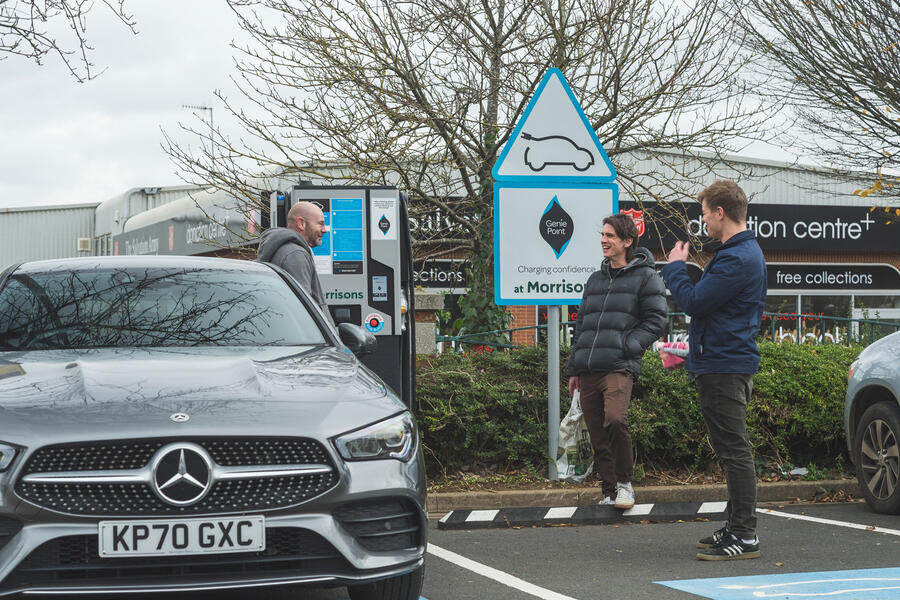
In terms of shape and size, it’s the Peugeot that best resembles the traditional three-box compact executive saloon of yore. That’s not to say it’s a boring, traditional-looking car, though – not with its gracefully sloping roofline and pretty face. The CLA also cuts a fine dash, following the 508’s lead in its attempts to resemble a four-door coupé. But as it’s based on the same platform as the A-Class hatchback, it’s a smaller car overall. Then there’s the Golf, which, well, looks like a Golf.
It’s certainly a varied field. But while these three cars may differ in shape and size, they all have one thing in common: a plug-in hybrid powertrain.
Short of going for a full-on electric car, for company car drivers, plug-in hybrids are the most tax-efficient form of four-wheeled personal transport. Their smaller batteries and electric motors mean they can cover shorter distances without emitting anything from their tailpipes, and their small-capacity petrol engines are ready to step in on long-haul trips. The more electric range a PHEV has, the less fuel it will use and the lower its average CO2 emissions will be. And, of course, less CO2 means less BIK taxation. You know how it works.
Given the fact that such a considerable chunk of a PHEV’s appeal lies in its on-paper cost-benefit analysis appeal, I suppose we should crunch some numbers first.
In terms of electric range, it’s the CLA that comes out on top. Mercedes claims its 15.6kWh battery (10.6kWh of which is usable) is good for a maximum zero-emissions range of up to 44 miles, which combines with average CO2 emissions of 23g/km for a BIK rating of just 6%. So with a P11D of £37,395, the CLA will cost someone who falls into the 20% income tax bracket £37.40 per month and £74.79 per month for someone in the 40% bracket.

The Golf is similarly impressive. The claimed 39.7-mile range afforded by its 13.0kWh battery isn’t quite as good, but it still slots into the 6% BIK bracket by the skin of its teeth. A P11D of £35,905 means that someone on the 20% tax rate will pay £35.91 per month in company car tax, and it’s £71.81 for those taxed at 40%.
Compared with your average diesel or petrol car, the 508 is still phenomenally tax-friendly, but it doesn’t quite stack up against its rivals here. With a claimed electric range of between 33 and 39 miles from its 11.8kWh battery and CO2 emissions of 29g/km, it misses out on that 6% BIK rating and instead falls into the 10% bracket. So it will cost £56.83 per month at 20% and £113.65 at 40%. And, just to put this all into context, a humble, £36,130 BMW 318d M Sport would cost £168.53 or £337.05 per month, depending on your income tax bracket. That’s quite a jump.
So of our trio, it’s the Golf that’s likely to be the cheapest to run, and it’s tempting at this point to simply label the Volkswagen the winner and be done with it. After all, that’s really what these cars are all about, right? Minimising tax expenditure? The cynic in me says it is, but surely there is some scope for driver enjoyment here, too? Let’s find out.
In terms of outright ride comfort – important if you spend a lot of time on the motorway – it’s the Peugeot that gets the nod. Its longer wheelbase, softer suspension set-up and optional adaptive dampers with their comfort setting all contribute to a ride that feels impressively cushioned and confidently controlled, even on particularly lumpy stretches of road.
It doesn’t shudder too violently or noisily over bumps at lower speeds, either, and its cabin looks and feels suitably snazzy and well-made – although the low-set, small-diameter steering wheel might not be to everyone’s taste. For what it’s worth, I quite like the go-kart-like driving position this car affords.

The powertrain is nicely refined, too. There’s decent urgency and responsiveness when you’re rolling around on electricity, and its 1.6-litre turbo petrol engine is smooth and quiet when it does spark into life. Even with a combined output of 222bhp, its 1720kg kerb weight means it doesn’t feel outstandingly rapid, but it’s easily swift enough for stress-free real-world use.
That said, the Peugeot doesn’t always change gears with a great sense of urgency, and its brake pedal can feel very spongy, so there’s limited driver appeal here. But this is nonetheless a likeable, easy-going car that’s generally relaxing to tool about in. It’s spacious, too, with generous rear leg room and a 487-litre boot – the largest one here by a considerable margin.
In terms of set-up, the Mercedes follows the Peugeot’s soufflé-like lead – only its execution isn’t as successful. There’s a sponginess to the ride quality that appeals at first, but put a good amount of pace on and that vertical body movement soon begins to feel a bit too unchecked. It just doesn’t feel as controlled as the 508, and an occasionally abrupt and noisy secondary ride doesn’t win the CLA much favour either
Neither does its powertrain. Yes, the Mercedes has the best claimed electric range here, and it runs smoothly when operated as such. But its 1.3-litre turbo petrol engine really feels out of its depth in terms of mechanical refinement; on an open throttle, it’s not only loud but harsh-sounding too. And with a transmission that seems intent on quickly downshifting whenever you go near the throttle, you’re exposed to that din more often than you would like.
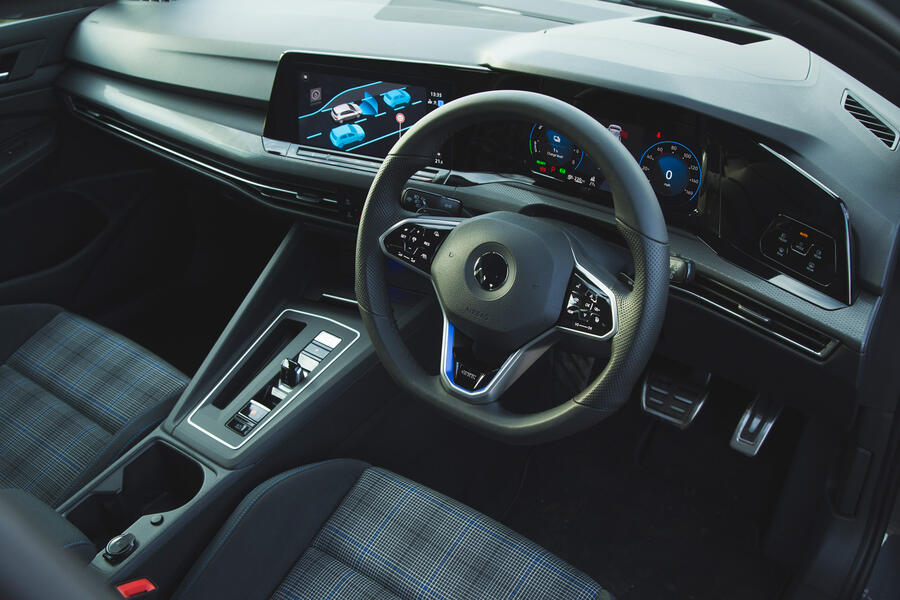
The CLA is also the only car here without a dedicated mode that allows you to reliably charge up the battery while you’re driving. That’s annoying when you’ve got a longer motorway trip ahead of you and you want to ensure you’ve got some juice available when you’re back in town.
Inside, the Mercedes impresses for superficial design appeal, but it feels cheap in places and is quite cramped. There’s barely any leg room or head room in the second row, although its 395-litre boot is pretty good. In fact, it’s larger than the Golf’s, which has a seats-up capacity of just 273 litres. That’s because the Volkswagen’s fuel tank had to be moved beneath the boot floor so that its battery could be housed under the rear bench.
But from behind the wheel, it’s the Golf that feels like the airier and more spacious of the two cars. Its interior doesn’t have quite as much to offer visually, but it feels solid and the ergonomics are sound. The biggest point of difference, however, is the Golf’s sense of motive character.
The GTE is pitched as more of a plug-in hot hatchback, and with a combined power output of 242bhp from its 1.4-litre turbo petrol engine and electric motor, it actually has the same amount of poke as the Golf GTI.
That said, it’s heavier than the GTI, so it doesn’t feel quite as swift or fleet-footed in its responses – but it’s by far the most entertaining car here. It steers really quite crisply, with plenty of grip and a much more prominent athletic streak than the others.

You can feel the GTE’s brake-based torque vectoring sucking it in towards the apex, and its body movements are much better tied down. The by-product is a ride that feels busier and firmer at low speeds, but it’s still comfortable and well-isolated enough that you could easily use this car on a day-to-day basis.
It’s by no means as fun as a genuine hot hatch, but it’s way more engaging than either the Peugeot or the Mercedes. That the Volkswagen backs up this elevated sense of dynamism with a slick hybrid powertrain, good interior practicality, decent ride refinement and that all-important on-paper financial appeal is an impressive achievement.
appeal is an impressive achievement. I’m not sure that you would lust after the GTE in the same way you might the GTI, but I certainly find some comfort in the fact that there’s a semi-affordable PHEV out there that does actually place some emphasis on driver appeal. For that and for the rest of it, the spoils go to Volkswagen.
READ MORE
Mud plug-in: Land Rover Discovery Sport meets PHEV SUV rivals
Audi Q3 45 TFSIe is brand’s first compact SUV plug-in
Analysis: Demand for plug-ins rose, while fossil fuels dipped

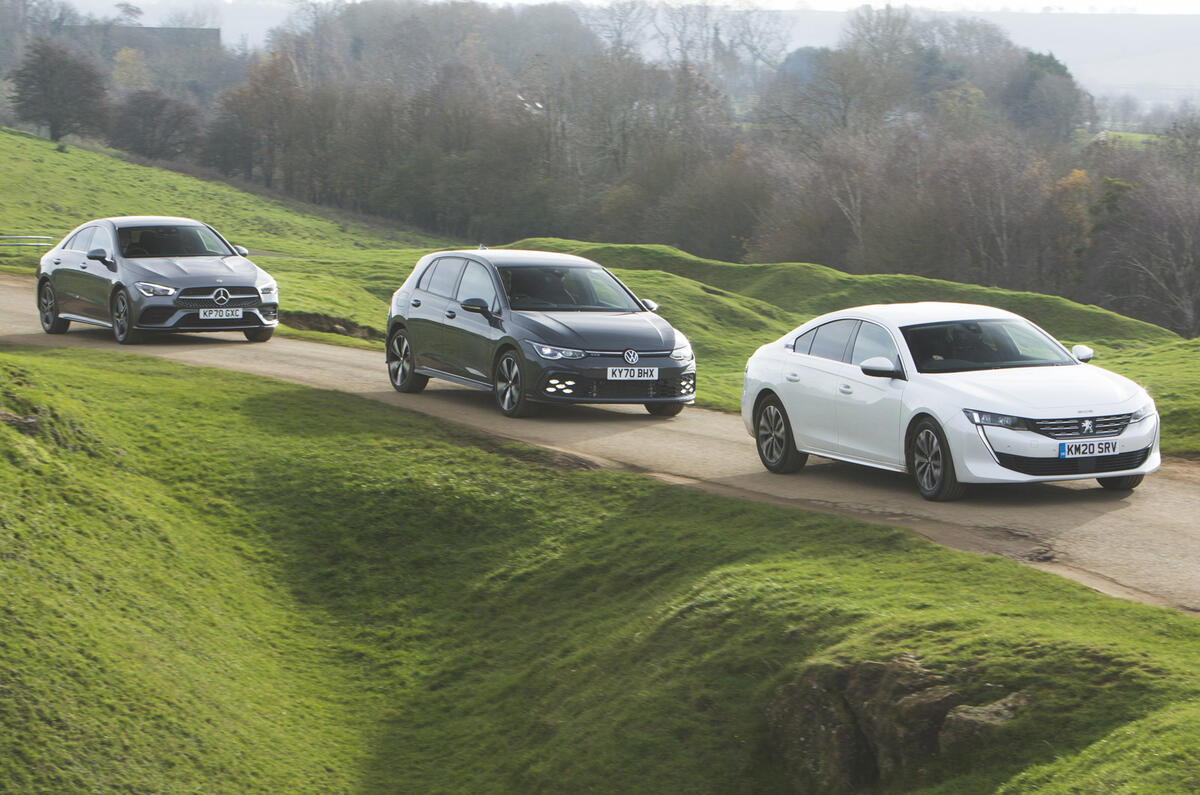
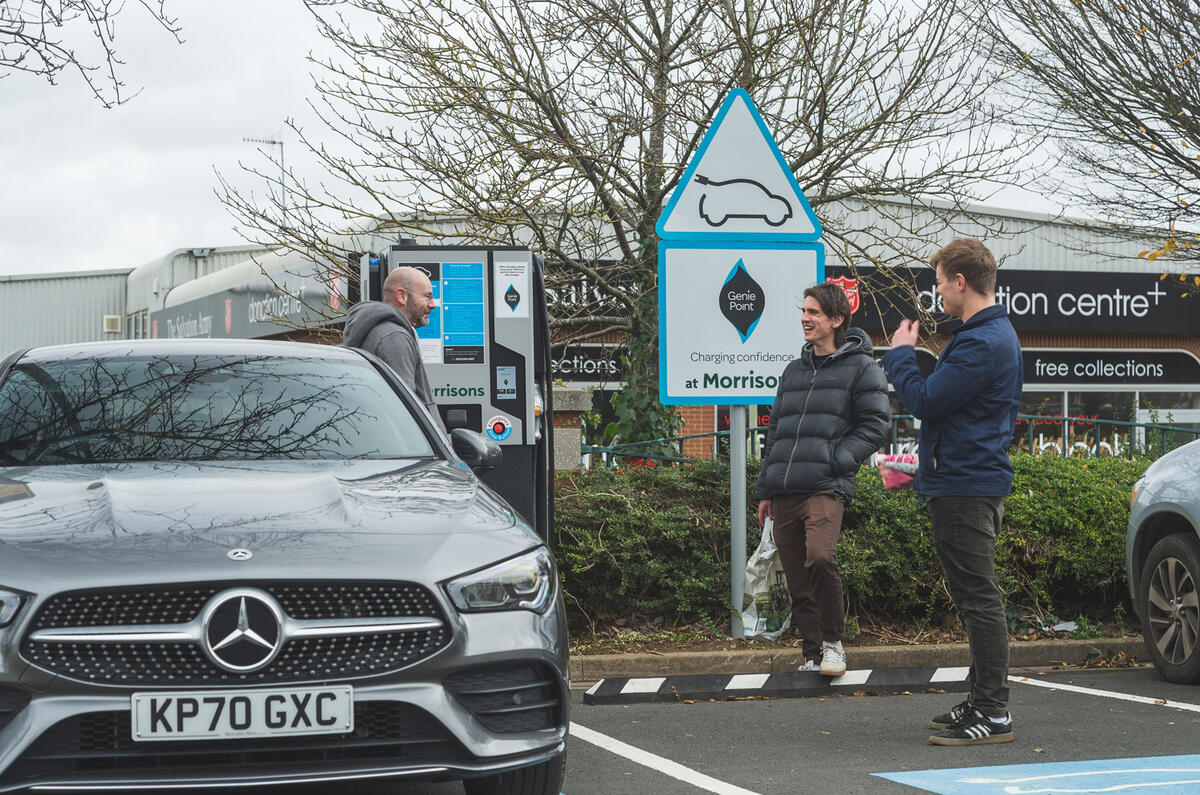
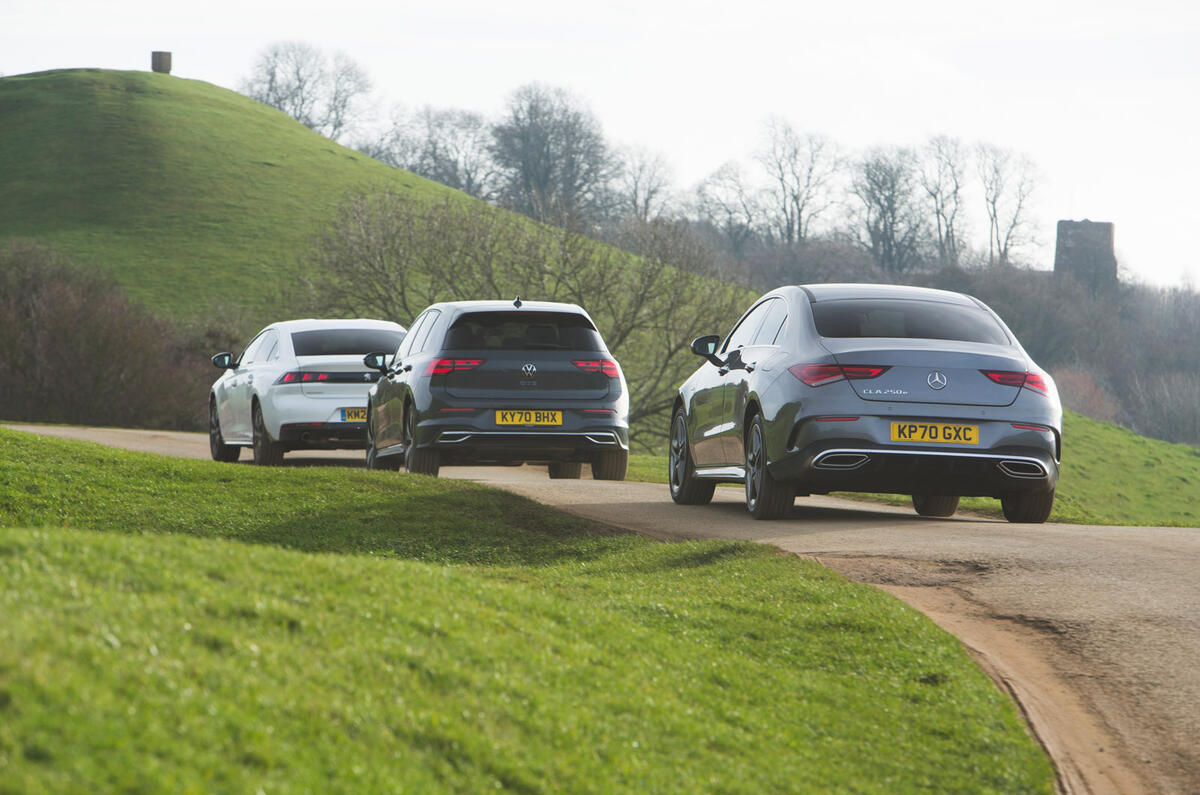
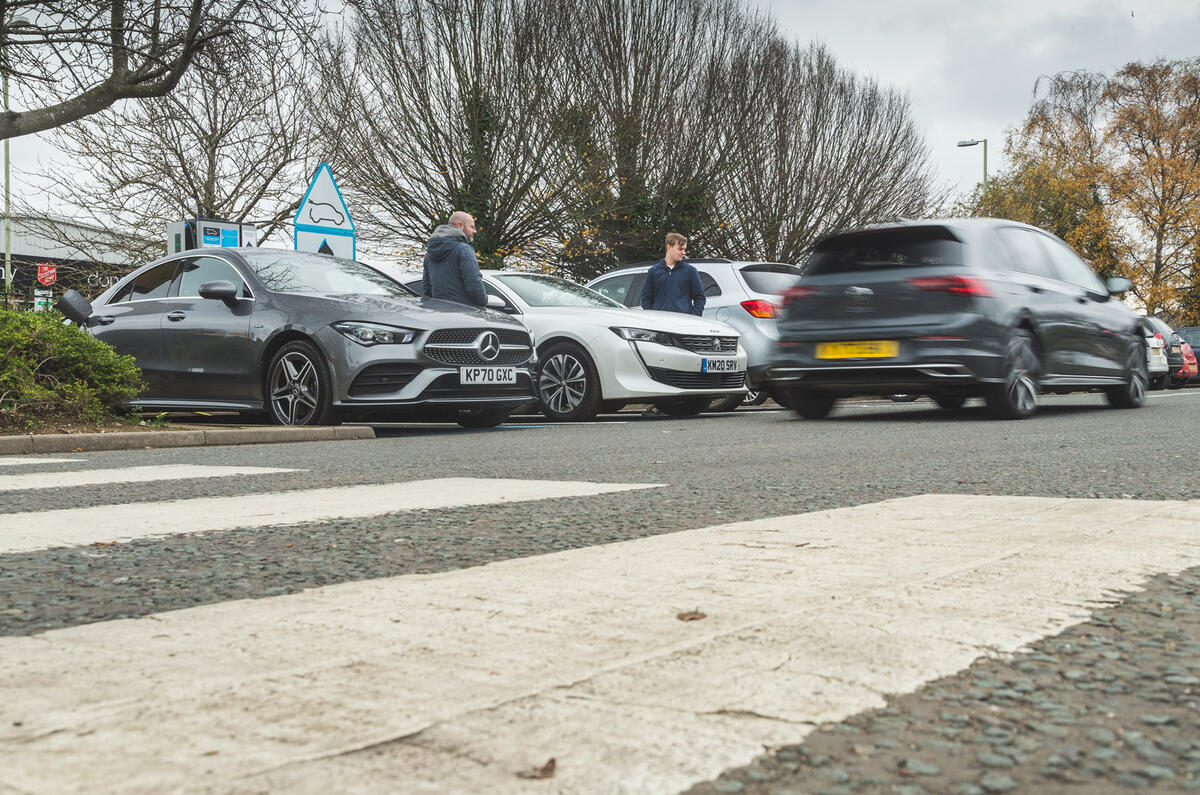
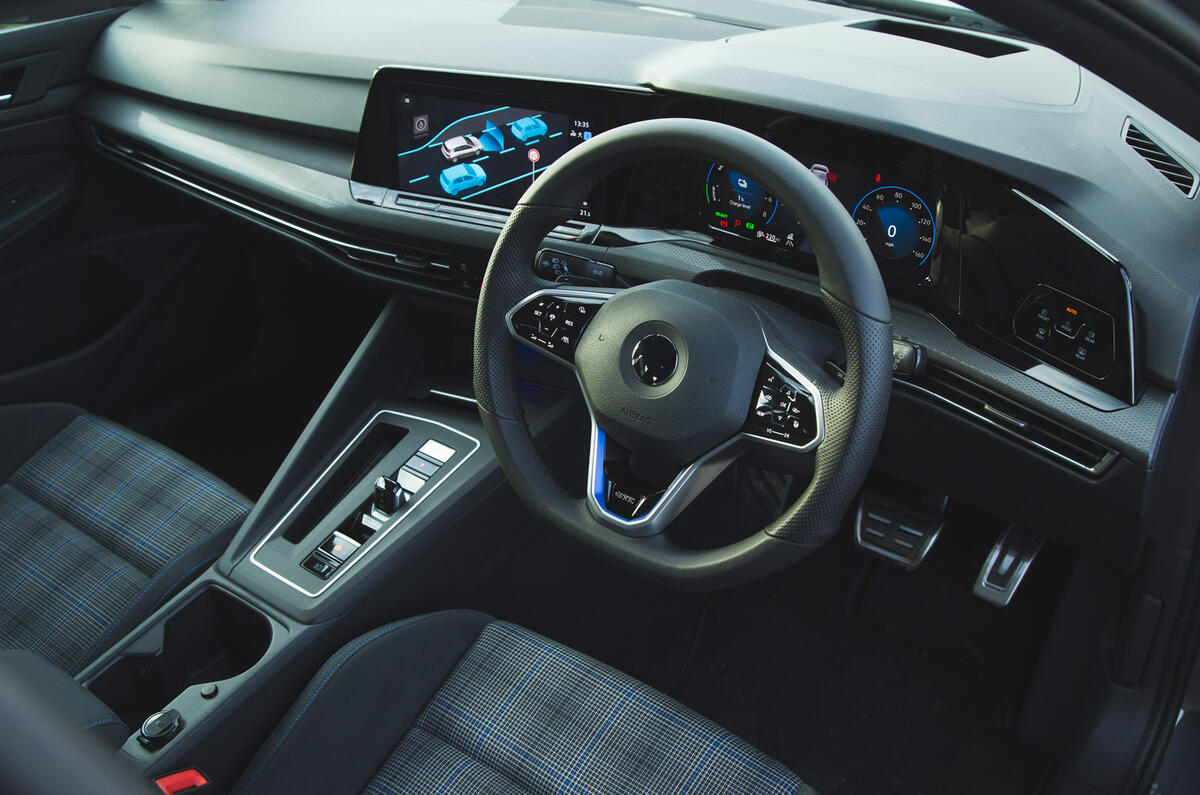
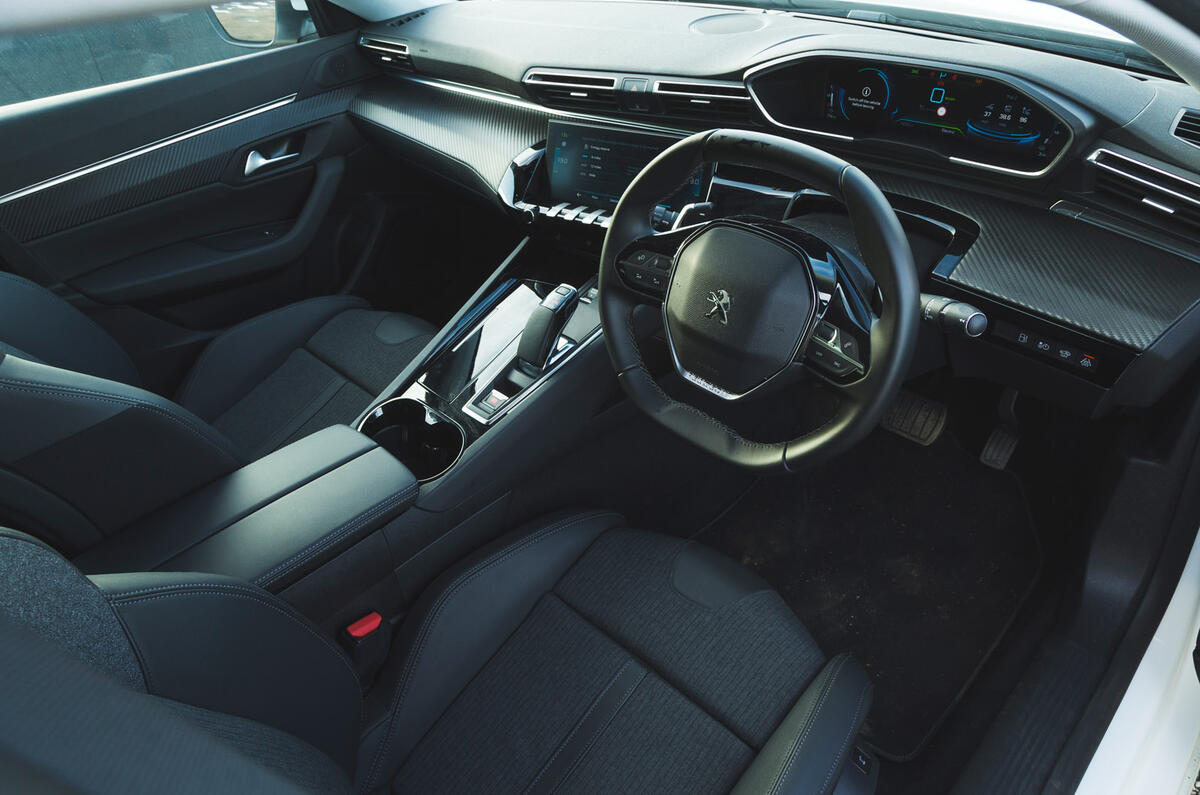
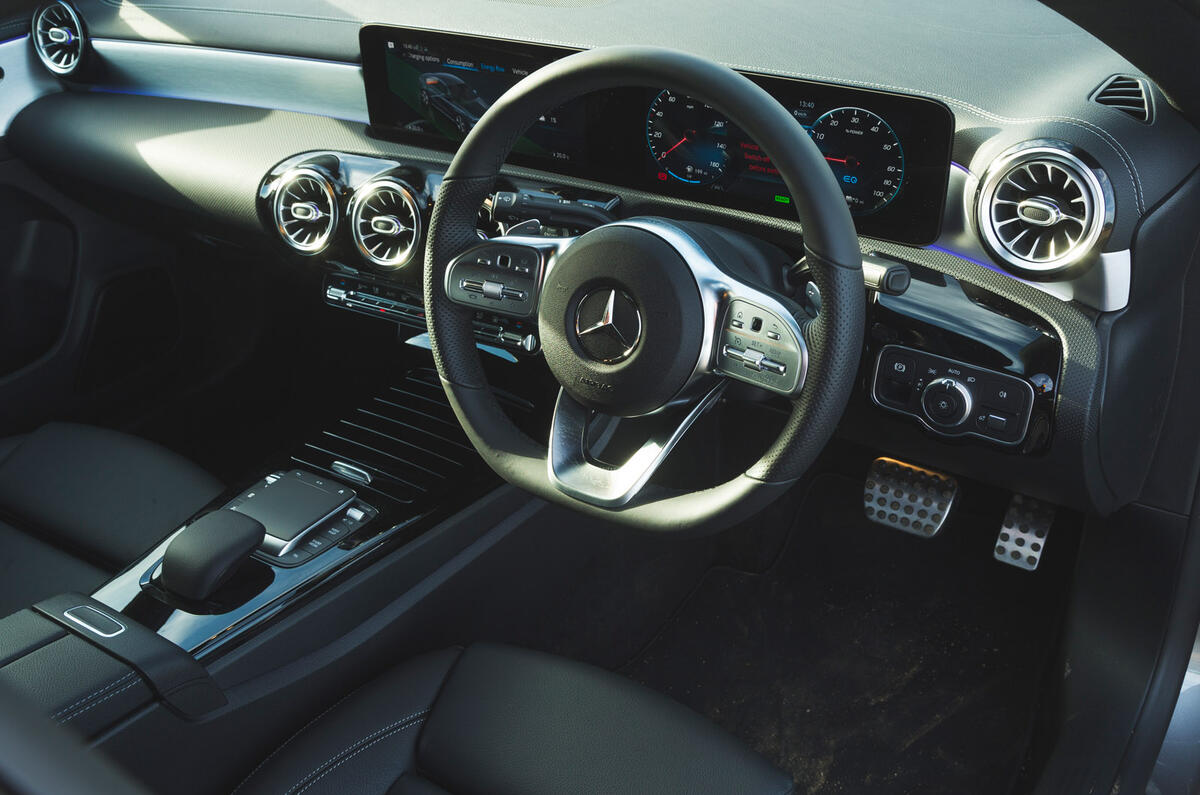
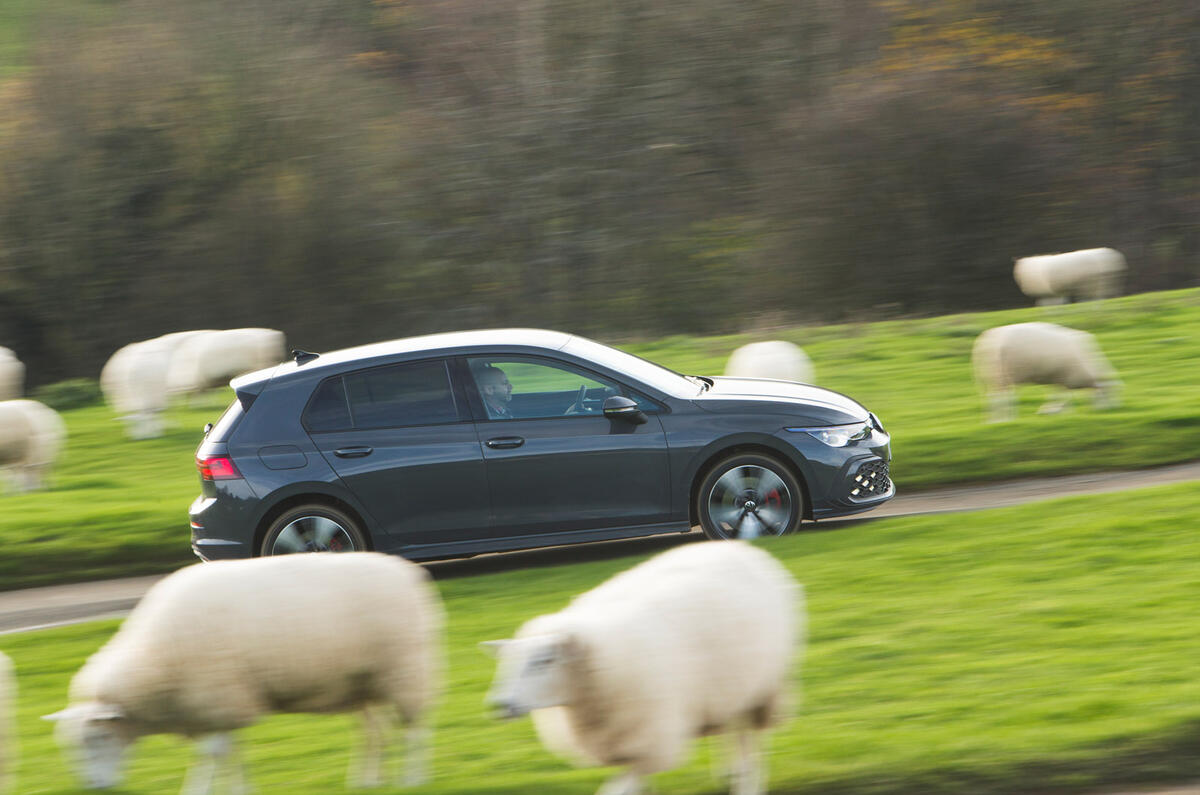


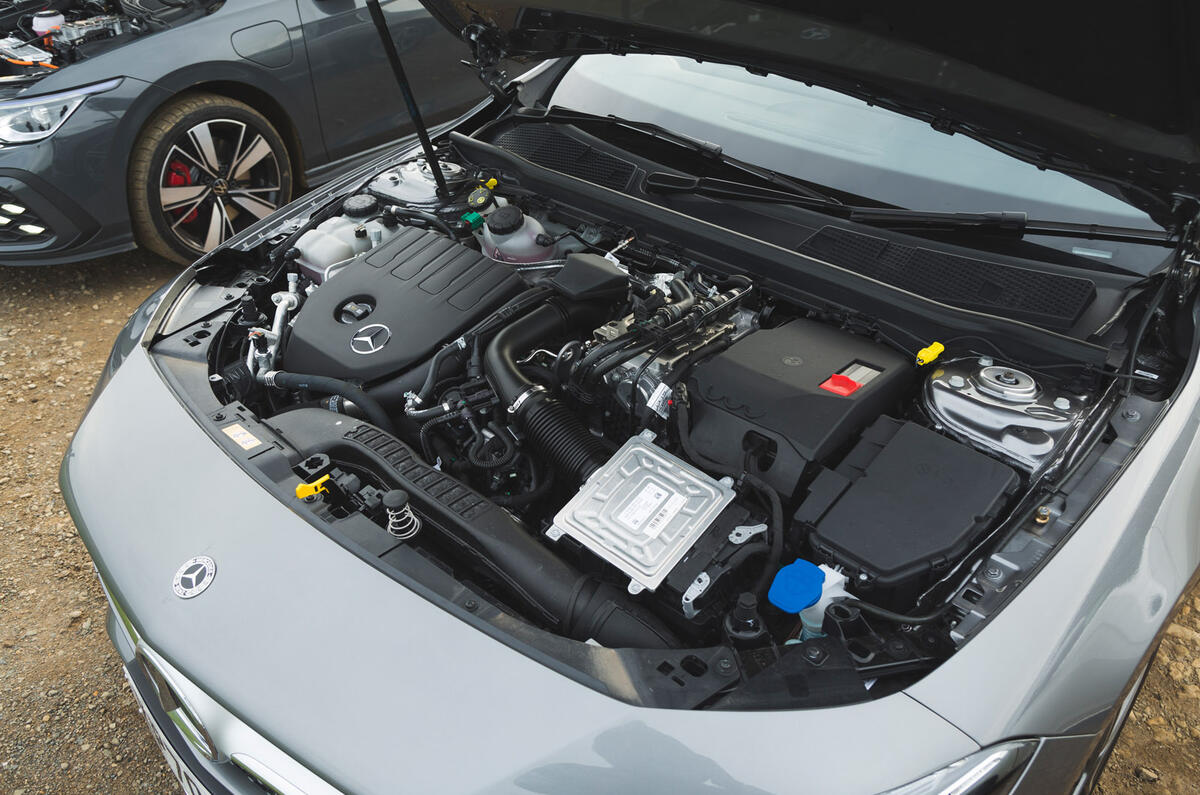










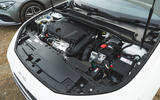
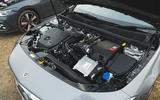



Join the debate
Add your comment
Interesting but limited review. Would have liked to see some indication of the real world fuel economy, as this is the major issue with Phev’s
Just a note taxes are not there for funding schemes they are there to control behaviour, the £ has no intrinsic value as it is fiat money, please stick to cars rather than economics.
Whoever thinks the VW is the best of the three is probably in need of councelling or on the VAG payroll.